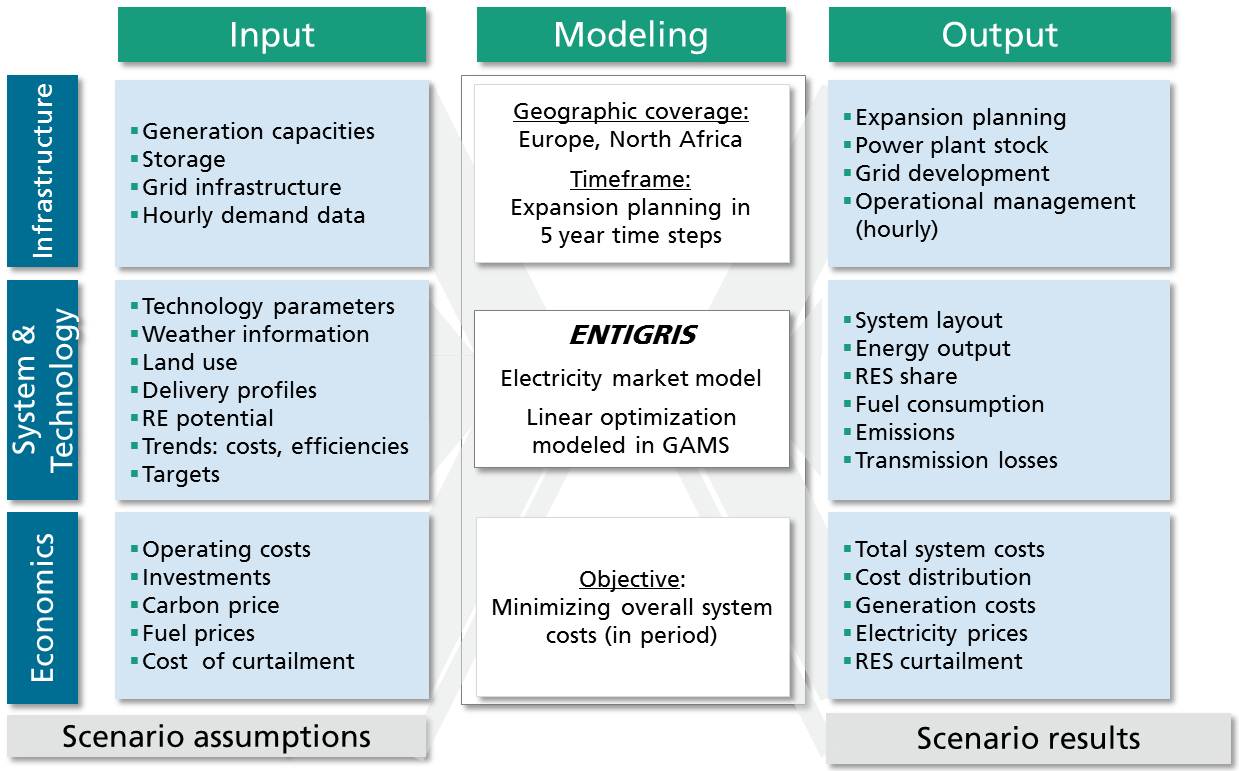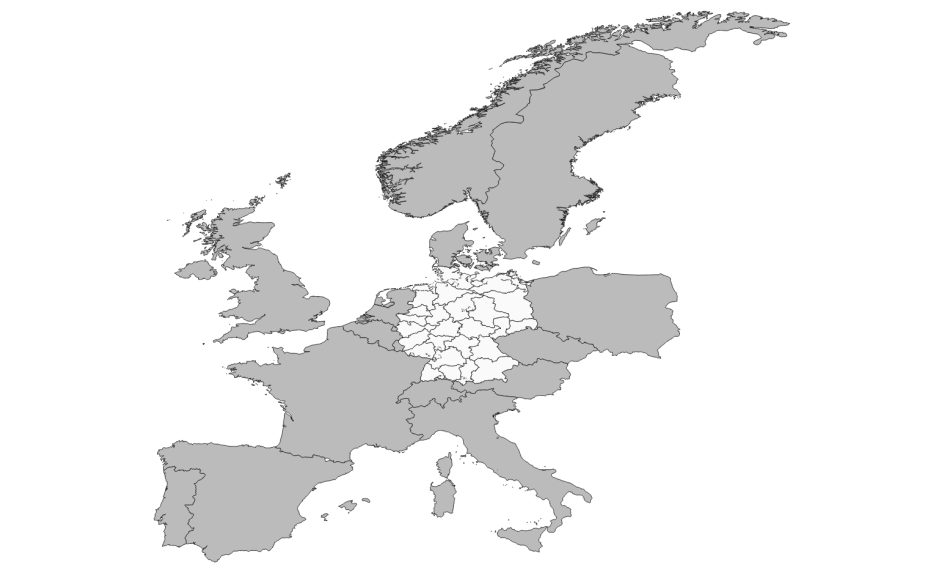Central research topics
- Future structural development in the power system
- Identification of market integration of power plants
- Operation and interaction of power plants in the long-term until 2030 or 2050
- Role of renewables in different electricity markets and systems
- Interactions between power plants, grids and energy storages
Background of model application
All electricity systems in the world are in a huge transition process. In the upcoming years, the increasing integration of large volumes of electricity from renewables into the existing supply structure will lead to large changes of the plant portfolios in the systems. Until 2050, electricity from renewable energy sources will become the dominate role in the electricity supply. Due to this change, the electricity generation will be more distributed and based on very different sources and technologies with also very intermittent feed-in. The national electricity systems will continue the trend to higher internationalization and coupling. The ENTIGRIS model of the Fraunhofer ISE covers exactly this development by providing the opportunity to analyze the changing energy system and providing recommendations for our clients.
Characteristics and benefits of the model
The electricity model ENTIGRIS is an expansion planning model for the European and North African electricity systems. It was developed in the internal Fraunhofer project »Supergrid« and extended in the public research project RES-DEGREE funded by BMBF. The model results can be used to analyze the long-term portfolio of power plants, regional specific expansion of renewables and conventional power plants, required grid capacities and the development of total system costs. Scenarios for the long-term development are calculated by considering cost projections and long-term climate policies such as framework conditions of limited CO2 emissions or defined share of renewables in the electricity system. The detailed coverage of the generation from renewables in combination with an optimization of conventional power plants and other relevant system components (high-voltage transmission grid, storages etc.) enables to quantify the effects in the future electricity system in Germany, Europe or North Africa. The model can be easily adapted to other countries (specific references exist for South Africa, Jordan, and Tunisia, in addition to wider use in Europe and North Africa).

